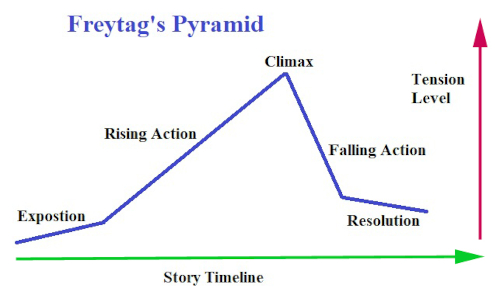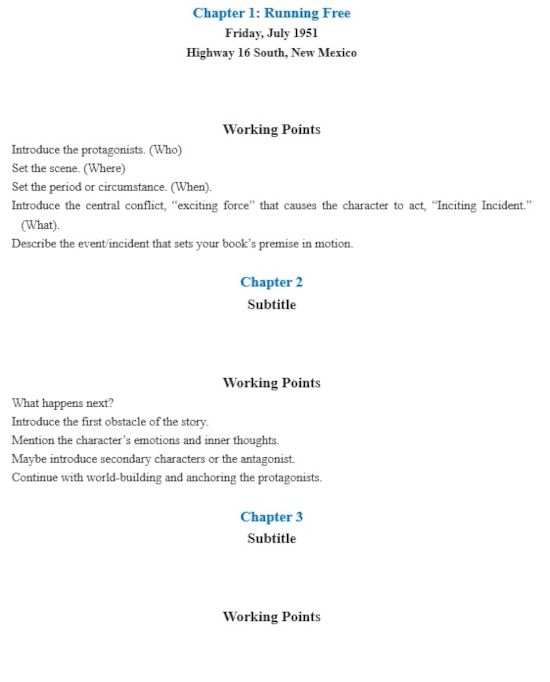Outlining/Plotting
“An author must learn the principles of good storytelling only in order to write better from the heart.”
—Uri Shulevitz
I saw a movie once at a theater with a lot of action and breathtaking special effects. But an hour and a half later, when the movie ended, I left the theater asking myself what the movie was about. Yes, I walked away clueless.
The same thing has happened to me with novels. I have read stories with excellent grammar and vivid descriptions, however, I felt lost and did not know where the story was going. Without a plot, the story falls flat.
A critique partner informed me I am a pantser because I wrote my last two books without a roadmap or a plot outline. That got me thinking. I did not want to fly by the seat of my pants anymore, so I investigated plotting/outlining.
After extensive research, I discovered more than I ever wanted to know about the subject. My mind could not digest all the information about outlining, plotting, and story mapping.
Search Criteria:
- A Disturbance and Two Doorways
- Dan Harmon’s Story Circle
- Dean Koontz’s Classic Story Structure
- Fichtean Curve
- Five-Act Structure
- Freytag’s Pyramid
- A Hero’s Journey
- In Medias Res
- Kishōtenketsu Structure
- Red Herring Structure
- Save the Cat Beat Sheet
- Snowflake Method
- Story Spine
- The 7-Point Story Structure
- The Flashcard Method
- The Three-Act Structure
- Tragic Plot Embryo
Not everyone can outline a story. It takes a certain type of discipline.
That said, sketch out a plot outline in your head or on paper before you write your story. The plot outline is your story’s roadmap.
Some writers use a combination of the plot structures I listed. For me, the five-act plot structure seemed the most straightforward method. All story plots have a beginning, a middle, and an end. But there is more to the plot structure than that.
The five-act plot structure elements:
- Exposition/introduction
- Rising action
- Climax/turning point
- Falling action
- Resolution/denouement
Some well-known authors don’t even bother with outlines. However, having an outline will provide you with useful benefits.
The benefits are:
- Assist in the research
- Facilitate speedier writing
- Provide a sense of direction
- Saves editing time
- Prevent plot holes
- Improves character development
- Accelerates story pacing
- Enables time tracking, which avoids extensive rewrites
The Five-Act Plot Structure
“My only conclusion about structure is that nothing works if you don’t have interesting characters and a good story to tell.”
—Harold Ramis
This is what the Freitag Pyramid outline/plot graph looks like. The Freitag Pyramid has a beginning, a middle, and an end. But there’s more in between. The rising and falling action ties everything together.
You can use the following five-act plot structure elements with the descriptions as a template. Just fill in the bullet items with essential information and expand them before starting your first draft.
1. Exposition: (Can take several paragraphs, a chapter, or two.)
- Introduce the protagonists. (Who).
- Set the scene. (Where)
- Set the time period or circumstance. (When)
- Introduce the central conflict “exciting force” that causes the character to act, “Inciting Incident.” (What)
- Describe the event/incident that sets your book’s premise in motion.
2. Rising Action: (Can take 20, 30, or 40 chapters.)
- The main conflict/obstacle begins with the primary character that he or she must resolve.
- Every conflict/obstacle is a stepping-stone that leads to the story’s climax.
- This is where the story can take a different path, or a secondary conflict/obstacle can arise.
- Introduce secondary characters to assist or complicate the main character’s goal. The conflict could affect a single or multiple characters.
- Build towards the climax, focusing on the main character and their new world.
- Placing the main character in difficult situations will build tension and conflict.
- It is acceptable to have questions not answered until the end of the story.
3. Climax: (This can take up 1 to 3 chapters.)
- This is the crucial point when the protagonist deals with the results of the events/conflicts. This is the moment that the reader has been waiting for and is unsure where your story will go next.
- In the climax, everything changes in the story. The main character makes a life-altering decision. This could be a low point for the protagonist.
- Depending on the story, the protagonist does not always decide. (Plot twist.)
- The story can take two different paths: One, the story can build from bad to worse and end with a tragedy. Two, the story can build from bad to good and end with joy. For good or ill, this is where the characters have a change in fortune.
- This is where all the different subplots and characters converge.
4. Falling Action: (A few paragraphs or a chapter.)
- These actions occur immediately after the climax, with detailed consequences—good or bad—that the characters must confront.
- This is the time to resolve conflicts and subplots, so your story doesn’t feel rushed in the last few chapters.
- As a result of the protagonist’s decision, the conflict gives way to resolution during the falling action. This is where you tie up the loose ends and tension dissipates.
5. Resolution: (This can take a paragraph or more.)
- The resolution is the end of the story, which tells what happens to the characters after resolving the conflict. You can also introduce a plot twist before resolving the conflicts the main character or the antagonist confronts.
- The tension has peaked, but tension is still high here because the characters must decide what path to take.
- Some stories have happy conclusions; others have sad endings.
- If there is a series, this is the place to introduce a cliffhanger, leaving the reader eager for the next story.
Outline Approach
“Plot is no more than footprints left in the snow after your characters have run by on their way to incredible destinations.”
—Ray Bradbury
After several attempts at outlining, I ended up with a routine that worked for me.
- I open a blank MS Word document and start with Chapter 1.
- I include:
- A chapter title
- The POVC that starts the chapter
- When and where the event takes place
- Time marker
- Add five or six writing points. Don’t worry about perfect sentences. These writing points roughly outline the chapter’s content. Think of these writing points as the chapter summary.
- I repeat this for the remaining chapters until I finish the story.
Outlining the complete story makes it easier to spot plot issues or missed time markers. I can fine-tune my outline until it has a smooth flow.
When the outline is finished, I expand each of the chapter summaries into more detailed scenes. The chapter word count is never the same. Most of my chapters average around 2,200 words.
This is what my outline looks like:
In Summary:
The plot outline can serve two functions:
- Ensure the story’s plot has a smooth, meaningful flow
- Track the characters and the story’s timeline





